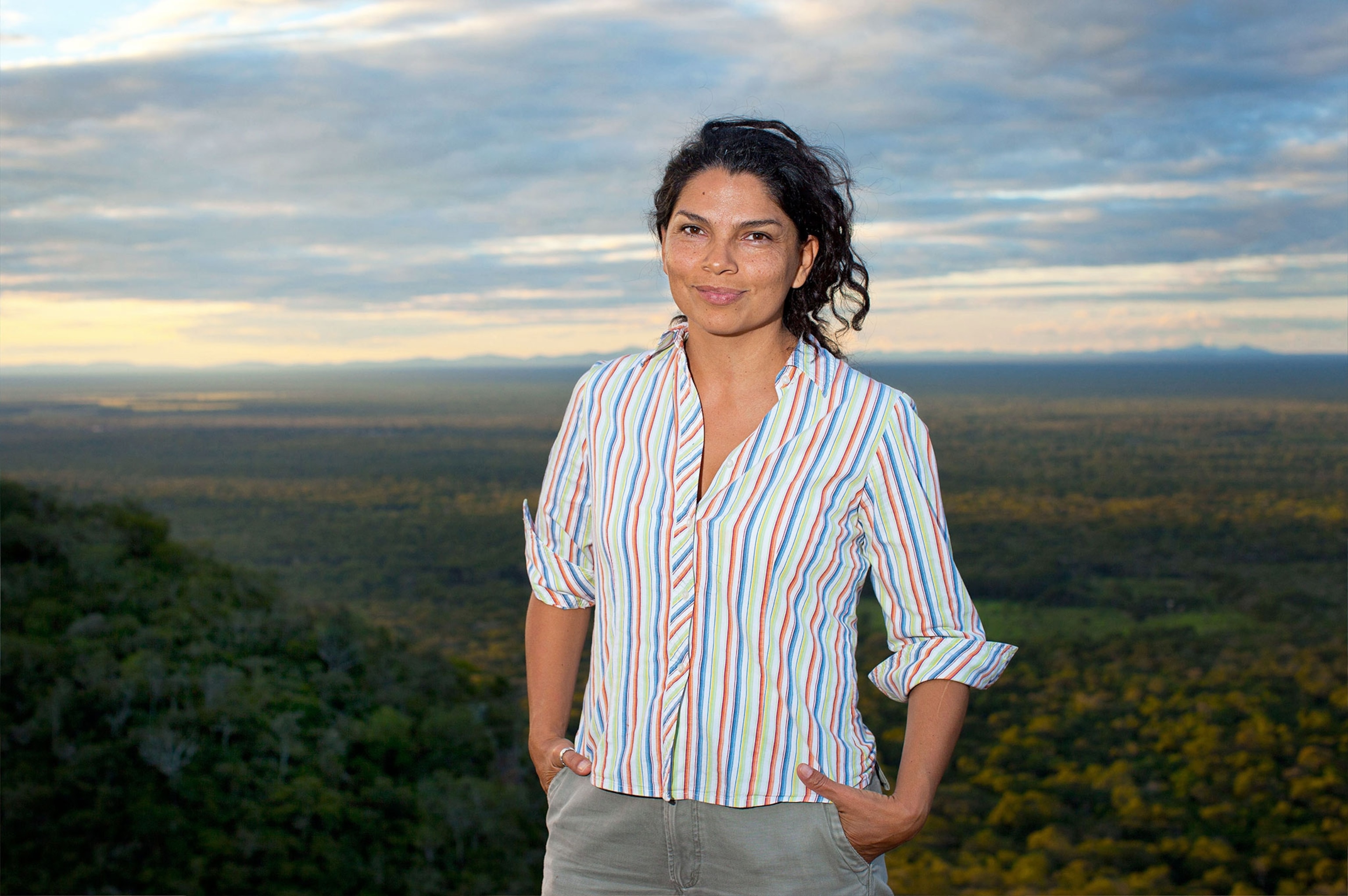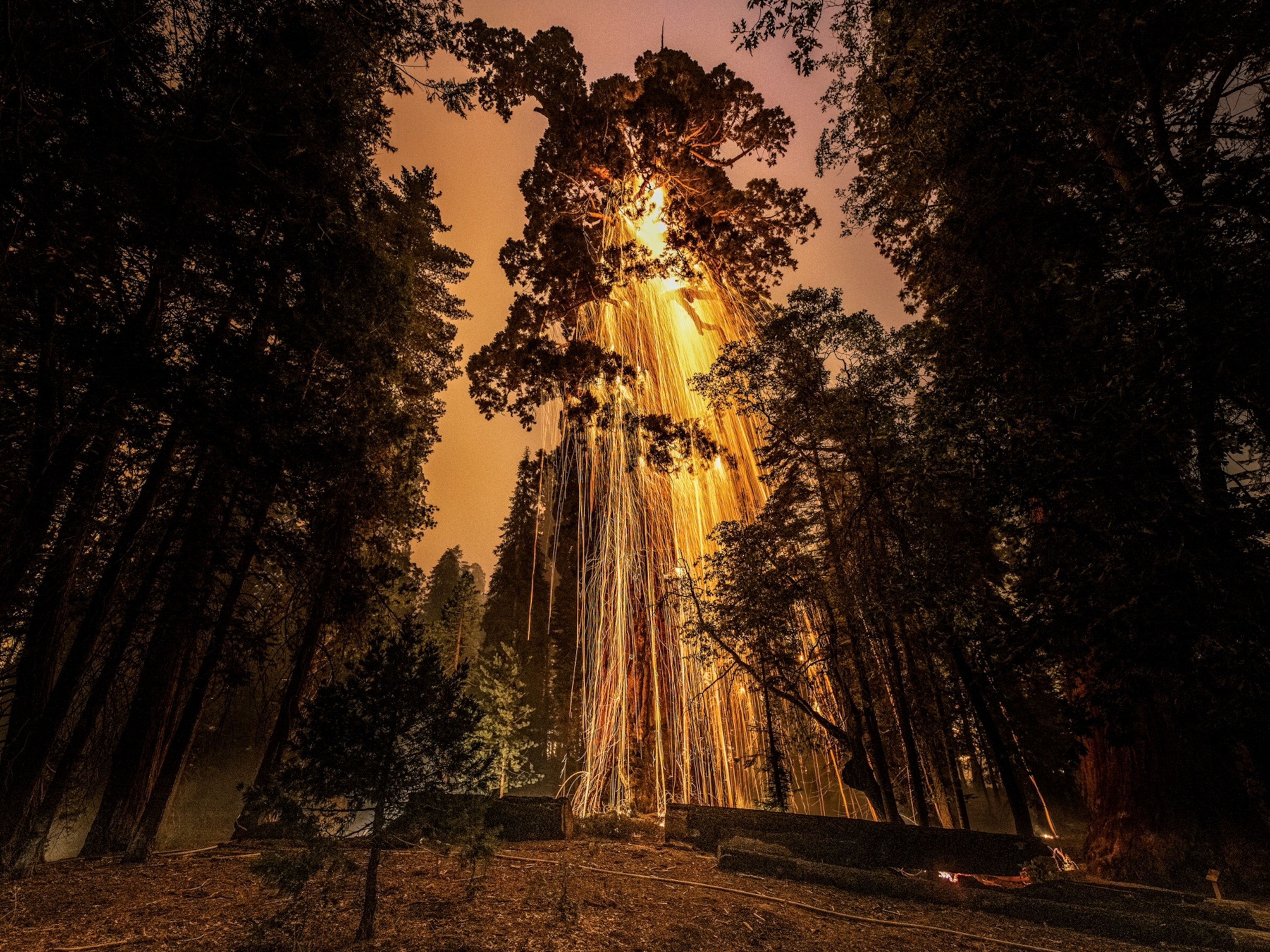
Enlisting an Army to Save a Forest
Erika Cuéllar taps local talent in her efforts to conserve South America's Gran Chaco, one of the planet's largest unknown wilderness areas.
Biologist Erika Cuéllar makes a great field general—and recruiter—for conservation.
During more than a decade of scientific research in South America’s Gran Chaco, the massive tropical dry forest that spreads over parts of Bolivia, Argentina, Paraguay, and Brazil, Cuéllar enlisted local villagers and indigenous people to help navigate and better understand one of the planet's largest unknown wilderness areas, home to over 4,000 animal, bird, and plant species.
Cuéllar, a Bolivian native, has a fierce dedication to protecting the Gran Chaco, which is under increasing threat from deforestation, large-scale farming, and cattle ranches. After completing research for her Ph.D. in 2007, she realized there was untapped potential to be mined—and groomed—among those who'd provided valuable expertise and context.
“These people could not just be forgotten—they are capable of doing so many things to protect the wild environment and face the challenges of conservation," she says. "They're intelligent and capable, but many spend half the year working in cities. I wanted to give them a chance to be professionals, stay home with their families, and take care of their own territory."

Cuéllar decided that Gran Chaco could be best served by a professional conservationist program drawn from the ranks of locals who live closest to the forest, including hunters. Adapting paramedic-style training, she developed a parabiologist program that turns out field experts adept in science and conservation skills.
So far, several dozen people in Bolivia, Paraguay, and Argentina have gone through the 800-hour, nine-month parabiologist course, which incorporates practical and theoretical training in biology, mapping, data collection, and other skill sets. Cuéllar says the hours are more intensive than those of a master's degree program, and there are final exams.
“Like paramedics, parabiologists use their specialized skills to save lives—in this case, their ecosystem, the land that belongs to them,’’ says Cuéllar, a National Geographic Emerging Explorer and Rolex Laureate. “Parabiology is also a way to invest in the involvement of local people, to give the rightful owners of the land a way to make informed decisions about the territory and its future in a changing world."
Cuéllar's own research on biodiversity has been largely focused on saving the guanaco, the wild ancestor of llamas whose numbers have dwindled to just a few hundred in the Gran Chaco. Her efforts helped outlaw guanaco hunting there, and she’s also behind a breeding program and ideas for recovering the species' grassland habitat. Louise Emmons, a scientist at the Smithsonian Institution National Museum of Natural History, credits Cuéllar for "single-handedly" conserving the guanaco.
Impressed by her earlier work regarding another species, scientists named a newly discovered type of gopher-like rodent after her: Erika’s tuco-tuco, aka Ctenomys erikacuellarae. It's native to Bolivia, where she participated in field expeditions to find early signs of the species.
Rodent notoriety aside, Cuéllar hopes to extend parabiologist programs in Ecuador, with a focus on Chaga, the tropical parasitic disease that’s impacting rural areas across South America. She’s also also developing conservationist programs for Dubai and Oman, where she recently spent 11 months training local researchers in a wildlife inventory of three wadis in the Jabal Samhan Nature Preserve.
“There were great moments when we encountered Bedouins in the wadis, women with their herds of goats, and old men who offered camel milk each time we saw each other—wonderful people,’’ Cuéllar says.
Cuéllar, married to Argentinian paleontologist Ulyses Pardiñas, spends about 20 days a month from home. She’ll be back in Bolivia later this month, working with park rangers in the Kaa-Iya del Gran Chaco National Park to update her work on the guanaco.
National Geographic produced this content as part of a partnership with the Rolex Awards for Enterprise.





